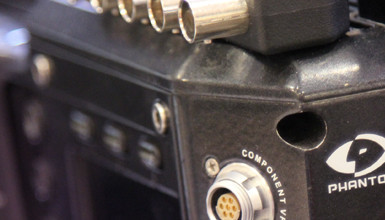After watching it, you might be asking yourself, "How did they do that?" Fortunately, Paul also released a behind-the-scenes video to accompany the film - in it, he talks a bit about shooting with the Miro and explains what went into creating the invisibility effect in post.
Paul was also nice enough to elaborate on the inspiration behind Salience, along with some of the particular challenges that he and his crew faced during the shoot:
You touch on it a bit in the BTS video, but tell us specifically why you wanted to use the Miro.
PT: The Miro was appealing for many reasons. I think its biggest claim is that it is entirely user-friendly, which sets it apart from the rest of the Phantom family. After a brief rundown of the camera, the camera was like second nature....So to be able to shoot an image that is comparable to something of the Flex without an operator or headache was super exciting. I wouldn't ever have imagined being able to operate a Phantom camera.
The Miro's size also opens up a ton of doors from a production standpoint and creatively. We were able to nab shots and stick the camera places quickly. Also this camera just makes a lot more sense for shooting in the forest location we chose and for the size of our crew.
What was the most challenging aspect of the production for you?
PT: I'd say the most challenging aspect was having to cart our our DIT station in a wheel barrow (nicknamed the CLETUS 5000 DIT cart). We ended up controlling the Miro via the laptop so it had to be around the camera the entire time. Since we had no media to work with, we dumped each shot onto the laptop; at first this slowed us down, however, it ended up being the only way to record everything RAW.
Did you run into any surprises while shooting with the Miro?
PT: Joe Gabriel, the DP, and I were very impressed by how well the camera shot in low light. Even though we were outdoors, shooting at 1500 frames per second significantly cuts your light down, especially by the end of the day. The Miro was very sensitive in these conditions. By recording RAW I was able to balance even the darkest shots after sundown with stuff shot at the beginning of the day.
How long did it actually take you to shoot and finish up the post for the film?
PT: A majority of the shoot was done in one day with two half-days before and after. On our first day we got snowed out so we spent most of the time getting familiar with the camera. It took about a day to transcode everything from RAW to ProRes, then about two weeks to put together the first rough assembly. The final compositing and finesse took about a month and half since I was working on it whenever I had free time. The sound design also took about a month or so.
Back in 2012, you submitted a treatment to our Miro High-Speed Inspiration Challenge that had some of these same themes - how did the project grow and evolve from that point?
PT: I always knew I wanted to do something that created contrast between an invisible figure and its background - separating something unseen from its background. I thought the colored powder was a great organic way of revealing the human body. That core concept remained intact.
As with any production, things change and evolve with time. I had wanted to allude to some sort of narrative without anything being too overt. It became about this relationship between two people, one who changes and one who is scared of change. As we went into production, some story elements had to be cut so it changed once again. My goal was to create a visual experience, an intriguing illusion; so in that respect I'm happy with the final result.
















